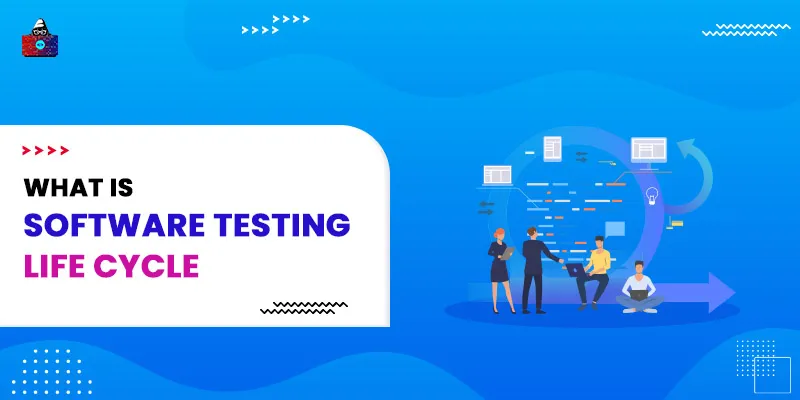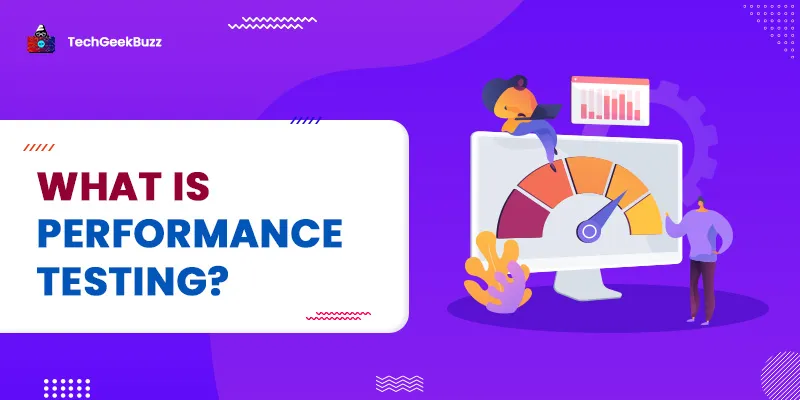Software Testing Life Cycle (STLC) refers to a sequence of various activities conducted during the process of software testing. In the STLC method, every activity is done through a planned and well-organized process. Every stage has various purposes and deliverables. Many organizations have various phases in STLC, but the principle remains equal. So let's discuss the characteristics of the STLC in brief.
Characteristics of STLC
- STLC stands for a fundamental part of the Software Development Life Cycle (SDLC), and STLC consists of the testing phases.
- STLC starts when all of the requirements are set, or a software specification document is given by stakeholders.
- STLC generates a step-by-step process for ensuring quality software.
At the primary steps of STLC, when the application or software product is being developed, then the testing team analyzes and describes the range of testing, criteria of entry and exit, as well as test cases.
STLC is beneficial for reducing the test cycle time and also enhances product quality. Once the development phase is completed, then the testing team is ready with their test cases and begins the execution. It helps in getting issues in the initial phase.
Phases of STLC process
- Requirement Analysis
- Test Planning
- Test Case Designing
- Test Environment Setup
- Test Execution
- Test Closure
Entry and Exit criteria
Each of the stages has specific Entry and Exit criteria, Actions & Deliverables connected with it.
- Entry Criteria: It provides the essential details that must be performed before testing can start.
- Exit Criteria: It describes the details that must be performed before testing can be stopped.
1. Requirement Analysis
It is the first phase included in STLC (Software testing life cycle). This phase consists of a Quality Assurance (QA) team that understands the requirement, such as testing and finding the testable requirements.
In this phase, the test team analyses the requirements through the testing point of view to identify all testable requirements. The QA team interacts with various stakeholders, like business analysts, clients, system architects, technical leads, etc., to understand the requirements thoroughly. There are various requirements are analyzed in this phase, and they are:
- Business Requirements: This requirement set includes high-level needs which are obtained through the business case by projects.
- Architectural & Design Requirements: This set of requirements is more detailed as compared to the business requirements. It defines the overall design needed for implementing the business requirements.
- System & Integration Requirements: This set of requirements is a detailed explanation of every requirement. It can be in the kind of user stories that describe the everyday business language. All of the requirements are sufficient details so that developers can start coding.
2. Test Planning
It is the essential phase of the Software testing life cycle (STLC) in which all testing strategy is determined. This phase is also known as the Test Strategy stage. In this phase, the Test Manager is required to determine the effort and cost estimates for the entire project. It describes the objective & scope of the project.
There are various testing types that are commonly used in the STLC, and they are:
- Unit Test
- System Test
- API Testing
- Install/Uninstall Testing
- Integration Test
- Agile Testing
The test plan is an essential step in the software testing life cycle, and the steps required in writing a test plan cover the following:
- Design Test Strategy
- Analyze the product
- Define Test Criteria
- Define Test Objectives
- Plan Test Environment
- Resource Planning
- Determine Test Deliverable
- Schedule & Estimation
3. Test Case Design
Test case design starts after the successful completion of the test planning phase. It is the stage of STLC in which the testing team records the particular test cases. With test cases, the testing team also provides the test data for the testing. After the test cases are ready, they test cases are examined by members of the QA administration.
An excellent test case is one that is valid at detecting errors and also includes most of the situations on the system under a test. So here is the guide for developing a good test case:
- Test cases need to be transparent and straightforward
- Create a test case with the end user to understand
- Avoid all test case repetition
- Do not assume the functionality as well as features of the software application.
- Assure 100% coverage of all software requirements
- You have to name all test cases id like they are identified while tracking defects.
- Perform testing techniques
- A created test case must deliver the Test Environment to a pretest state
- All test cases must generate the same decisions every time.
4. Test Environment Setup
Setup of the test environment has a significant part in the Software Testing Life Cycle. The testing environment is the setup of software as well as hardware for testing teams to perform test cases. It helps test execution through hardware, a network configured, and software. The test environment covers setting up different areas like:
- Setup of Test Server: Every test cannot be executed on the local machine, and it may require building a test server that supports applications.
- Network: You need to set up the network according to the requirements.
- Test PC Setup: You need to set up various browsers for various testers.
- Bug Reporting: Tools of Bug reporting should be implemented for testers.
- Generating Test Data for the Test Environment: Various companies use a distinct test environment for testing the software product and the standard approach used is for copying production data to test.
5. Test Execution
It is the next phase in the Software Testing Life Cycle. It is the process of executing the code and analyzing the demanded and exact outcomes. When test execution occurs, the test analysts start running the test scripts, which are based on the test strategy provided in the project.
6. Test Cycle Closure
It is the final step of the Software Testing Life Cycle which includes calling out a testing team member to evaluate or meet cycle completion criteria which are based on Quality, Cost, Time, Test coverage, Software, and Critical Business Objectives. A test closure report through the test lead is issued after finishing the exit criteria as well as finishing the testing stage. It supports a standard format like:
- Test Summary
- Test Summary Report
- Comprehensiveness Assessment
- Identifier
- Variances
- Summary of Results
- Approval
- Summary of Activities
- Evaluation
Stages of Test Closure
The process of test closure is performed with the support of six critical steps:
- Check planned Deliverables: The intended deliverables that will be provided to the stakeholder of that project are reviewed and examined by the team.
- Close Incident Reports: The team analyses that the expected deliverable is released and confirms that all the events are determined before the conclusion of the process.
- Handover to Maintenance: After solving activities and closing the event report, the test wares are then handed over to the maintenance team.
- Finalize Environment: It includes managing and archiving the Testware as well as software such as test environment, test scripts, test infrastructure, etc.
- Document System Acceptance: It includes system verification as well as validation as per the strategy outlined.
- Analyze Best Practices: It defines the different changes needed for related projects and their future release.
Conclusion
As we know that the Software Testing Life Cycle (STLC) is a sequence of various activities conducted during the process of software testing. In the STLC method, every activity is done through a planned and well-organized process. In this article, we have provided complete information regarding STLC in detail with the process and various phases that define the STLC process.
To gain an in-depth understanding of software testing, you can purchase this course here.
People are also reading:



![What is Waterfall Model? [Phases, Pros, & Cons]](/media/new_post_images/Waterfall_Model.webp)

Leave a Comment on this Post